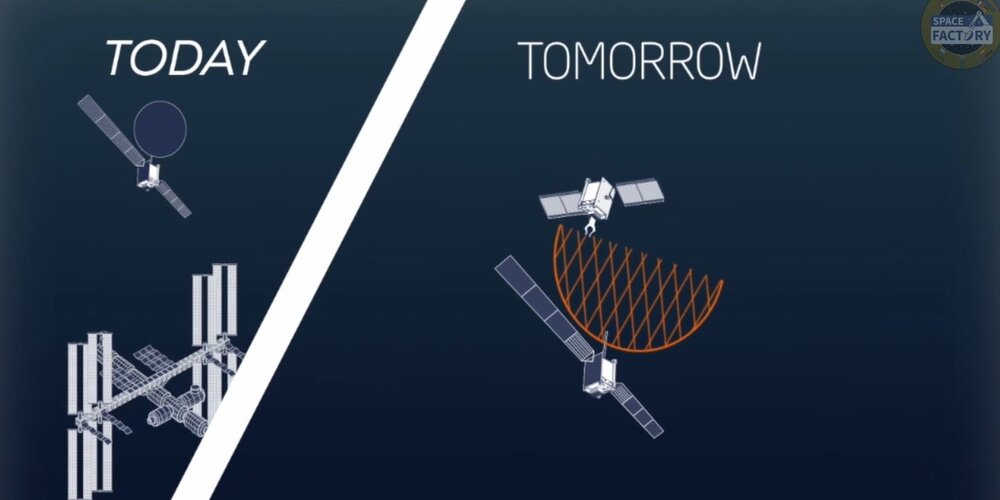#engineering
One step closer to a CubeSat swarm mission


The next revolution in space technology could be using swarms of small spacecraft working together rather than one much bigger spacecraft. Following an open call for ideas, ESA selected seven projects for mission/system concept study. On 26 April the teams showcased their work in ESA's Concurrent Design facility. Two studies were selected for further development.
#engineering #technology #space #science #esa #europeanspaceagency
posted by pod_feeder_v2
Why didn’t anyone tell me about this?
May we remember the workers and their sacrifice; the blood and sweat that poured into every inch of the Rideau Canal.
#canada #canadiana #canadianhistory #documentary #engineering #history #malaria #ottawa #rideaucanal
Monaco Highlights | 2024 Miniature Grand Prix | Miniatur Wunderland https://youtube.com/watch?v=CqT0u6QDJtg&si=fRS5SzgzlYDls-VD
Wow! This is peak #engineering
#miwula #germany #monaco #hamburg
NASA’s Voyager 1 Resumes Sending Engineering Updates to Earth – Voyager https://blogs.nasa.gov/voyager/2024/04/22/nasas-voyager-1-resumes-sending-engineering-updates-to-earth/
For the first time since November, NASA’s Voyager 1 spacecraft is returning usable data about the health and status of its onboard engineering systems. The next step is to enable the spacecraft to begin returning science data again. The probe and its twin, Voyager 2, are the only spacecraft to ever fly in interstellar space (the space between stars).
This is beyond awesome! This is a marvel of #engineering and #science
Calling all researchers: visit ESA and benefit from our labs and expertise


Are you working on a space-related research project? Do you think that you would benefit from access to ESA facilities? Apply to carry out research at ESA via our latest Open Space Innovation Platform (OSIP) Channel.
#engineering #technology #space #science #esa #europeanspaceagency
posted by pod_feeder_v2
ESA accelerates the race towards clean energy from space


ESA is laying the groundwork for the development of satellite technology designed to harvest the Sun's energy in space before transmitting it wirelessly to receiving stations on Earth.
#engineering #technology #space #science #esa #europeanspaceagency
posted by pod_feeder_v2
Simulating tumbling reaction wheel reentry

 Video: 00:02:04
Video: 00:02:04
A reaction wheel – one of the heaviest parts of a space mission, its changing rotation used to shift a satellite’s orientation – seen in a plasma wind tunnel belonging to the High Enthalpy Flow Diagnostics Group (HEFDiG) at the University of Stuttgart Institute of Space Systems (IRS). Arc-heated gas in the test chamber reaches speeds of several kilometres per second, reproducing reentry conditions, while the reaction wheel itself is being rotated, reproducing the tumbling that takes place as a satellite plunges through the atmosphere.
The reaction wheel itself comes from Collins Aerospace in Germany, which has supported Design for Demise (D4D) activities for many years and introduced several modifications to their TELDIX reaction wheel making it more likely to come apart during satellite reentry in support of demisability.
This test clip was presented during this year’s Space Mechanisms Workshop at ESA’s ESTEC technical centre in the Netherlands, focused on current and future requirements and guidelines to reduce the risk from orbital debris, including ESA’s Zero Debris Charter. The event was attended by more than 130 space mechanisms specialists from European industry and academia.
#engineering #technology #space #science #esa #europeanspaceagency
posted by pod_feeder_v2
ESA chooses technologies for future space transportation


ESA supports and accelerates disruptive technologies that will best meet ESA’s future space transportation needs for the 2025–2040 period. What comes next for top-ranked proposals?
#engineering #technology #space #science #esa #europeanspaceagency
posted by pod_feeder_v2
The Rise and Fall of 3M’s Floppy Disk - IEEE Spectrum https://spectrum.ieee.org/3m-floppy
Fascinating history
#floppy #engineering
Voyager 1 Issue Tracked Down to Defective Memory Chip

https://hackaday.com/2024/04/06/voyager-1-issue-tracked-down-to-defective-memory-chip/
#Hackaday serves up #Fresh #Hacks Every Day from around the #Internet. Our playful #posts are the #gold-standard in #entertainment for #engineers and #engineering #enthusiasts.
New podcast explores breakthrough ESA technology


In the first episode, published today Eike Kircher, Head of the ESA Technology Programmes Office, and Gianfranco Visentin, Head of Automation and Robotics, delve into the ambitious Star Tiger program, a project that's set to redefine space exploration and construction. Join us as we explore the insights from a panel of experts who are at the forefront of this technological marvel.
#engineering #technology #space #science #esa #europeanspaceagency
posted by pod_feeder_v2
A Telegraph Interface For the Hacker Hotel 2024 Badge

https://hackaday.com/2024/03/30/a-telegraph-interface-for-the-hacker-hotel-2024-badge/
#Hackaday serves up #Fresh #Hacks Every Day from around the #Internet. Our playful #posts are the #gold-standard in #entertainment for #engineers and #engineering #enthusiasts.
Security Alert: Potential SSH Backdoor Via Liblzma

https://hackaday.com/2024/03/29/security-alert-potential-ssh-backdoor-via-liblzma/
#Hackaday serves up #Fresh #Hacks Every Day from around the #Internet. Our playful #posts are the #gold-standard in #entertainment for #engineers and #engineering #enthusiasts.













